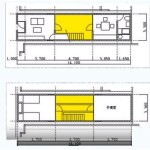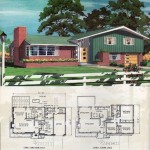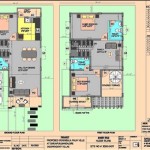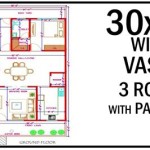Planta Eames House: A Case Study in Modernist Architecture and Interior Design
The Eames House, also known as Case Study House No. 8, stands as an iconic representation of mid-century modern architecture and design. Designed by husband-and-wife team Charles and Ray Eames, the house serves as a testament to their innovative approach to living spaces, blending art, architecture, and everyday life seamlessly. Understanding the house's layout, or planta, is crucial to appreciating its brilliance.
Key Features of the Eames House Planta
The Eames House planta is characterized by a rectangular footprint, divided into two distinct volumes: a residence and a studio. These volumes are arranged parallel to each other, separated by a courtyard paved with travertine. The design emphasizes a connection with the surrounding landscape while maintaining a sense of privacy.
Residence Volume: A Study in Open-Plan Living
The residence volume of the Eames House is a double-height structure, featuring an open-plan living area that flows seamlessly between dining, lounging, and working spaces. This open-plan arrangement encourages interaction and flexibility within the home. A mezzanine level provides additional space for a master bedroom and bathroom, overlooking the main living area.
Studio Volume: A Dedicated Creative Space
The studio volume mirrors the residence in its rectangular form and double-height structure. It provided a dedicated workspace for Charles and Ray Eames to pursue their various creative endeavors. The studio space features ample natural light and a flexible layout to accommodate their diverse projects in photography, filmmaking, and furniture design.
Courtyard: A Central Organizing Element
The courtyard serves as the heart of the Eames House planta, connecting the residence and studio volumes both physically and visually. This outdoor space blurs the boundaries between inside and out, extending the living area into the landscape. The courtyard also functions as a transitional space, providing a sense of arrival and privacy from the street.
The Grid System: Order within Flexibility
A key element underpinning the Eames House planta is the use of a rigorous steel frame structure based on a grid system. This grid provides a modular framework that allows for flexibility in the arrangement of interior spaces. The grid is also expressed externally, contributing to the building's minimalist aesthetic.
Relationship to the Site: Embracing the Landscape
The Eames House is strategically positioned on a gently sloping site overlooking the Pacific Ocean. The planta takes advantage of this location, orienting the living spaces towards the view. The close relationship between the house and its surroundings is further emphasized by the use of large glass panels that blur the boundaries between indoor and outdoor spaces.
Multifunctional Spaces: Adaptability and Efficiency
The Eames House planta emphasizes multifunctional spaces that can adapt to the changing needs of its occupants. For instance, the living area seamlessly integrates living, dining, and working functions. This efficient use of space reflects the Eameses' belief in practicality and adaptability in design.
The Role of Color and Texture: A Lively Interior
While the exterior of the Eames House is characterized by a restrained palette of black, white, and gray, the interior is a vibrant tapestry of color and texture. This contrast creates a dynamic and stimulating living environment. The Eameses carefully curated a collection of folk art, textiles, and personal objects that add character and warmth to the space.
The Eames House as a Living Laboratory: Constant Evolution
The Eames House was not conceived as a static object but rather as a living laboratory. The Eameses continuously experimented with the arrangement of furniture, artwork, and objects within the space, reflecting their evolving needs and aesthetic preferences. This constant evolution underscores the dynamic and adaptable nature of the house's planta.
Influence on Subsequent Architecture: A Lasting Legacy
The Eames House planta, with its open-plan layout, integration with the landscape, and emphasis on multifunctional spaces, has had a profound influence on subsequent residential architecture. The house continues to inspire architects and designers today, serving as a model for modern living that balances functionality, aesthetics, and a deep connection with the surrounding environment.
Preservation and Public Access: Maintaining a Design Icon
The Eames House is now a National Historic Landmark and is preserved by the Eames Foundation. The foundation offers public tours, allowing visitors to experience the house firsthand and appreciate the innovative design principles embodied in its planta. This dedication to preservation ensures that the Eames House continues to inspire and educate future generations about the enduring power of good design.

Pin Page

Eames House In Autocad Cad Free 844 49 Kb Bibliocad

Plan Eames House

Plantas

Clásicos De Arquitectura Casa Eames Charles Y Ray Archdaily En Español

Arts And Architecture Case Study House 8 Casa Eames

What Is A House Charles Ray Eames

Eames House La Casa Que Marcó Historia Del Estilo Industrial

Casa Abierta Post

Eames Case Study House 8








